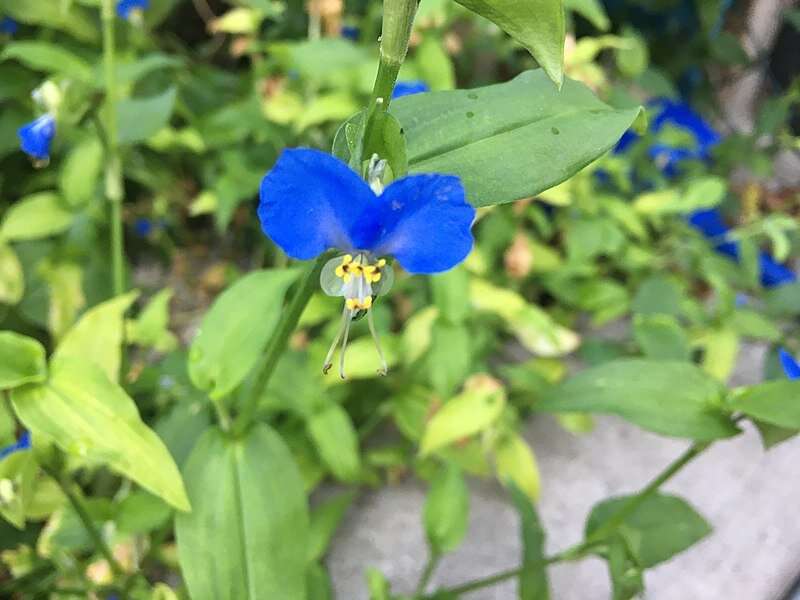What a difference a dayflower makes: Plant removes toxic copper ions from contaminated soil

The pretty and delicate Asiatic Dayflower, Commelina communis, the individual blooms of which last a mere 24 hours, hence the name, can quickly soak up toxic copper ions from contaminated soil. The plant, which is native to much of East Asia and the northern part of Southeast Asia, is known as yazhicao but is known as a noxious weed outside the region.
A team at Wuhan University of Science and Technology writing in the International Journal of Environment and Pollution describes how they have grown potted specimens of the plant in soil contaminated with copper and zinc. These two metals are commonly found in the ground around industrial and brownfield sites and there are many efforts to find simple, effective, and often biological methods to efficiently remediate such sites.
Plants that accumulate the metals directly from the soil might be grown on such a contaminated site and once they have matured, they can be harvested for processing. Such processing might simply involve safe disposal of the now-contaminated plant matter or extraction of the absorbed metal ions, depending on the economics.
Zhiqiang Pan, Shuqin Zhang, Dajun Ren, Xiaoqing Zhang, and Shuang Liu found that C. communis was much more tolerant of copper than zinc. However, there was a synergistic effect of each metal on the absorption of its counterpart at low soil concentration. Conversely, at high-contamination levels of both metals, the plant's ability to assimilate copper was reduced.
Such facile biological methods for the remediation of soils around industrial sites, mines, and other areas, contaminated with heavy metals could help reduce the environmental harmful effects of such contamination. Left untreated, soluble heavy metal ions represent a long-term environmental hazard and detrimentally affect local ecosystems, the associated food chains, and groundwater.
The demonstration of hyperaccumulation of copper ions from contaminated soil by C. communis points to this species as being a potentially useful tool in the efforts at phytoremediation of contaminated brownfield and other sites.
More information: Dajun Ren et al, Growth and accumulation of Cu and Zn by Commelina communis under Cu, Zn and their combined pollution, International Journal of Environment and Pollution (2022). DOI: 10.1504/IJEP.2021.10051955
Provided by Inderscience





















